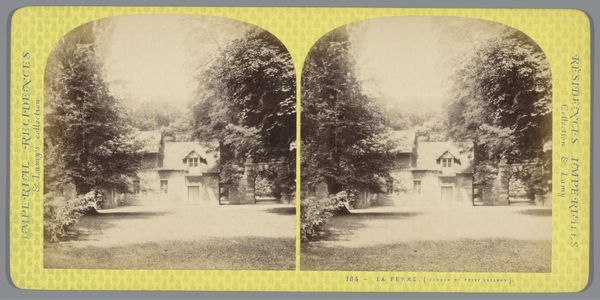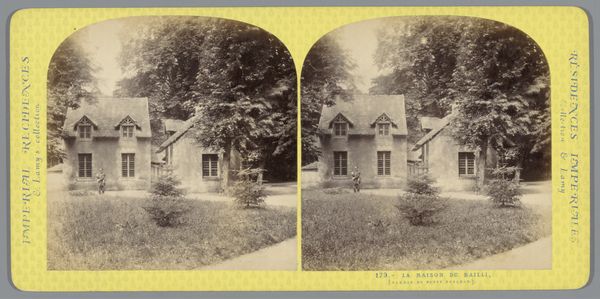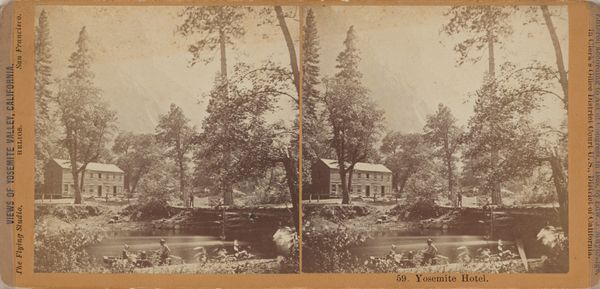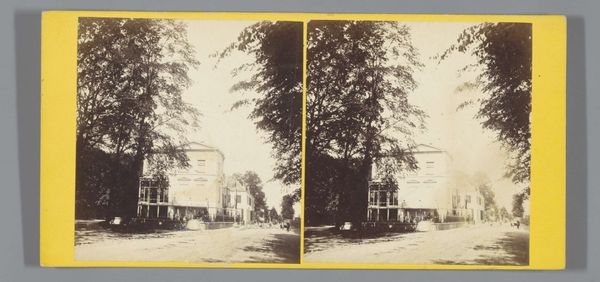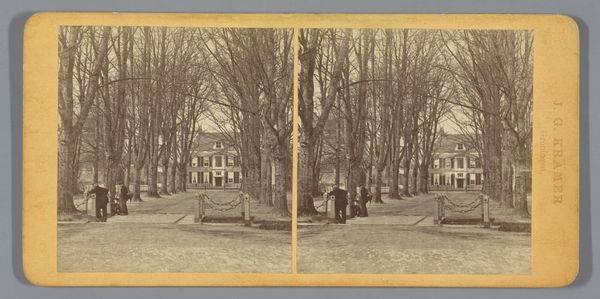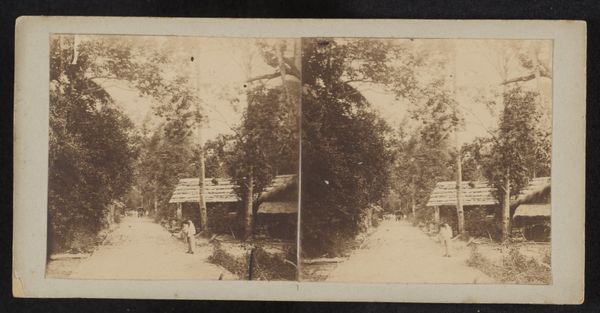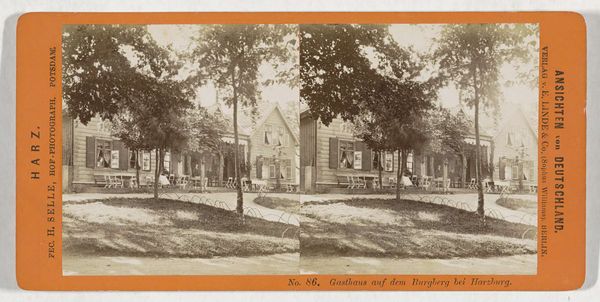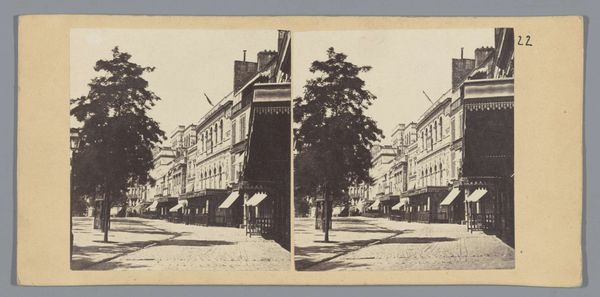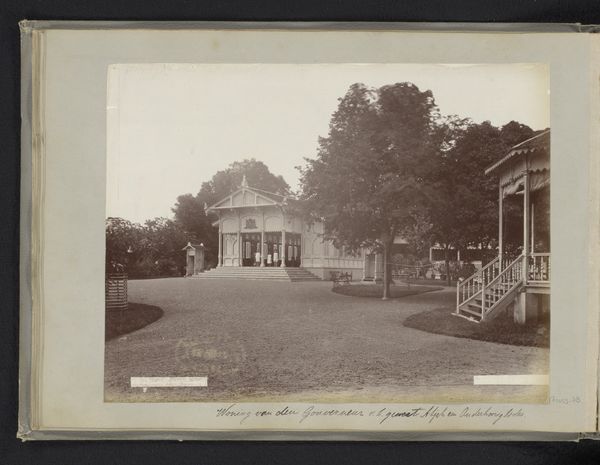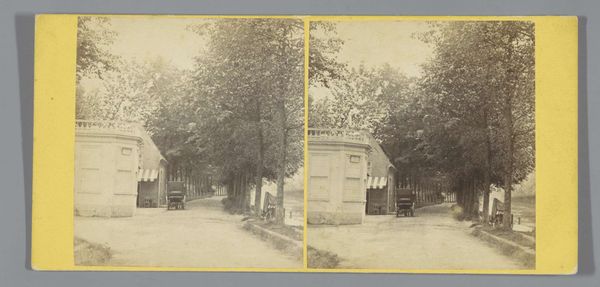
Gezicht op een zuivelfabriek in Le Hameau de la Reine bij het Petit Trianon 1860 - 1880
0:00
0:00
photography, albumen-print
#
garden
#
landscape
#
photography
#
albumen-print
Dimensions: height 87 mm, width 178 mm
Copyright: Rijks Museum: Open Domain
Curator: Let's take a look at "View of a Dairy in Le Hameau de la Reine near the Petit Trianon". This albumen print was created by Ernest Eléonor Pierre Lamy between 1860 and 1880. Editor: The symmetry is immediately striking, even duplicated here in stereoscopic form. And it evokes a dream-like, almost theatrical pastoral atmosphere, would you agree? Curator: Absolutely. The Dairy at the Hameau de la Reine was designed as part of Marie Antoinette's idealised, rustic village. This image reveals much about the socio-political context of the late 18th century as filtered through the lens of mid-19th century photography. The 'natural life' on display, of course, was entirely contrived for the Queen's pleasure, a deliberate staging of simplicity. Editor: Indeed. And within this image, the manipulation is further mediated by Lamy's choice of light and shadow. Note the crisp contrasts, achieved no doubt through careful darkroom practices. The tonality is critical to creating this picturesque effect. The composition relies heavily on the way the trees frame the dairy. It gives it an almost artificial perspective, very composed. Curator: Right. And such fabricated representations were widespread. Consider how such staged environments functioned: offering a visual retreat for the aristocracy, removed from the stark realities of peasant life and political instability that would lead to the Revolution. Editor: Which speaks volumes about how idyllic visions are frequently created to mask less desirable realities, I should think. Photography had a role to play in shaping that message. This specific photograph flattens any possibility of revolutionary sentiment with the even and artful distribution of light and its overall construction. Curator: Precisely. Images such as this shaped popular perception of the period. By representing idealized settings, it serves to legitimize a hierarchical societal order and presents an anodyne picture of class disparity. Editor: Well, this print's precise rendering certainly draws the eye in to discern that underlying structure. And in some way it almost invites questioning of its assumed naivete. It is, in essence, an extremely well-made historical artefact on its own merits. Curator: Agreed. Examining this photographic work gives us valuable insight into the political power of curated imagery and historical narrative.
Comments
No comments
Be the first to comment and join the conversation on the ultimate creative platform.
